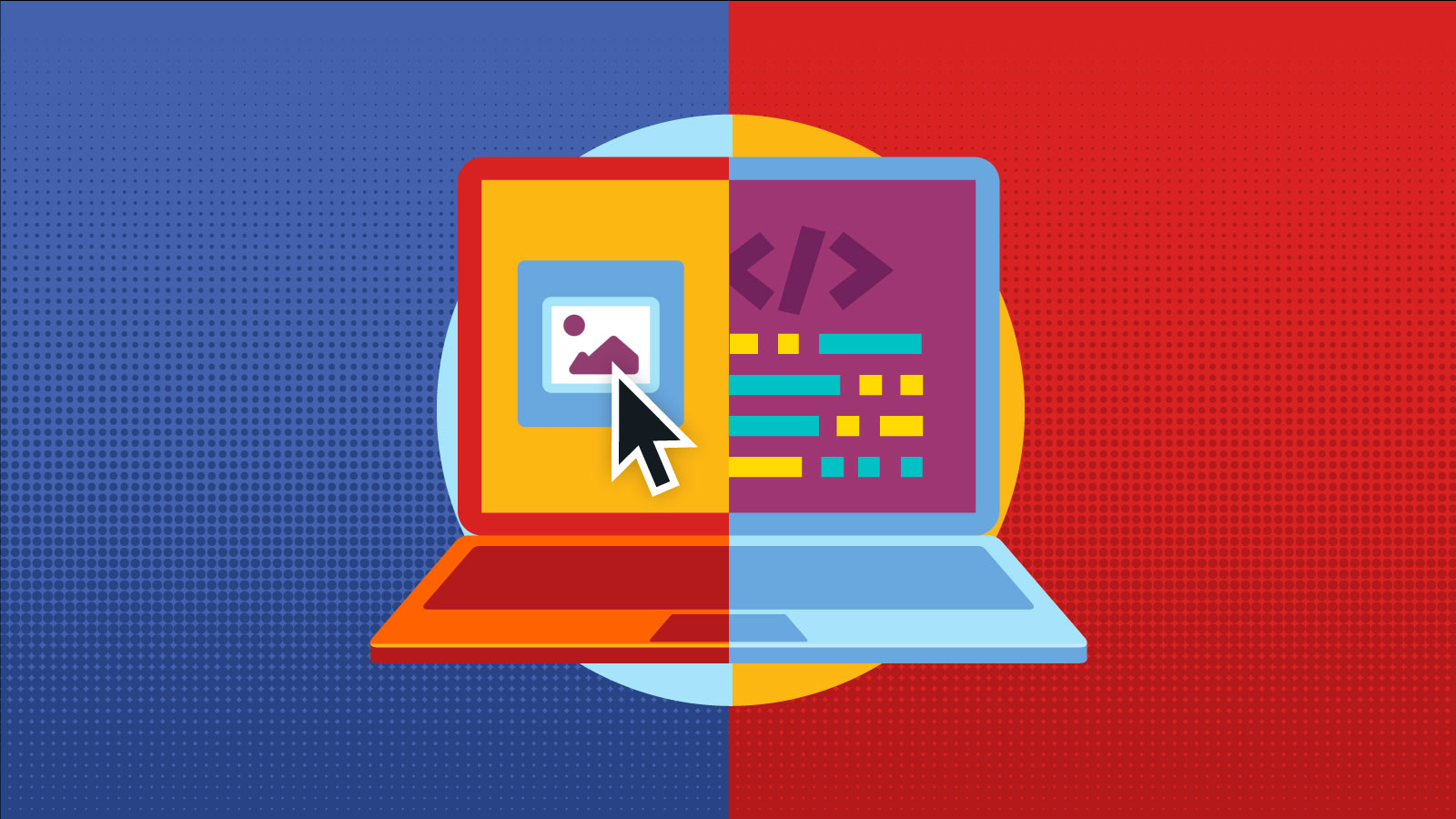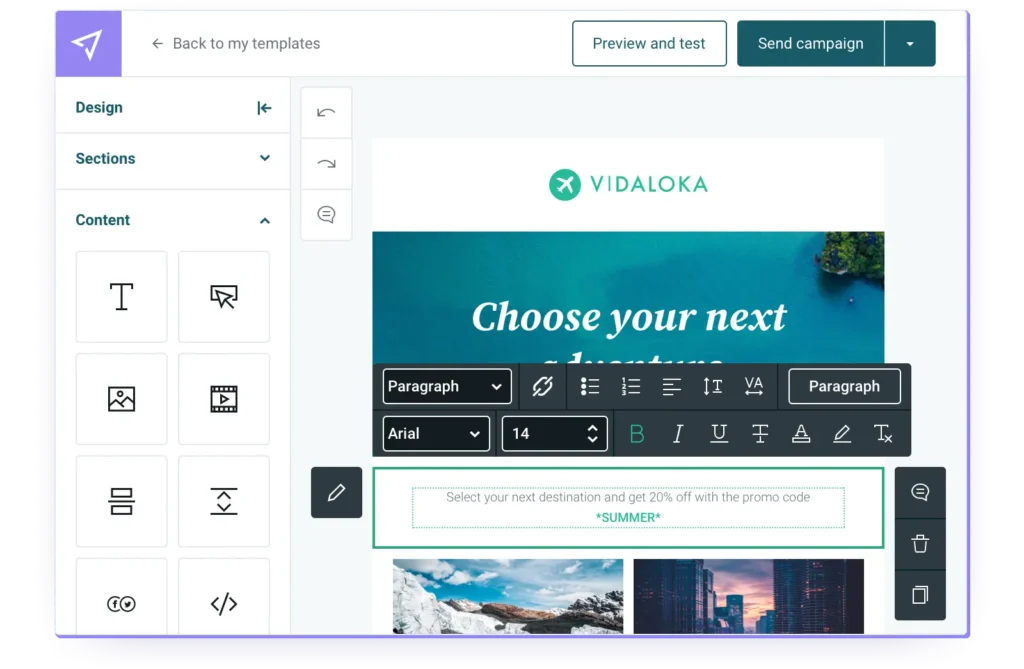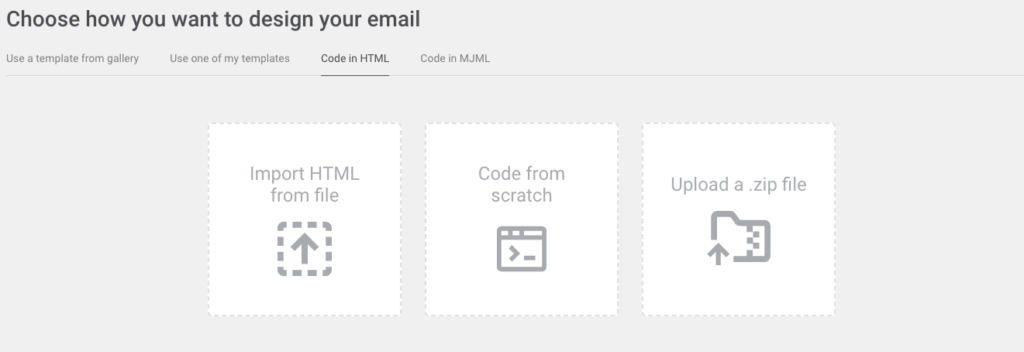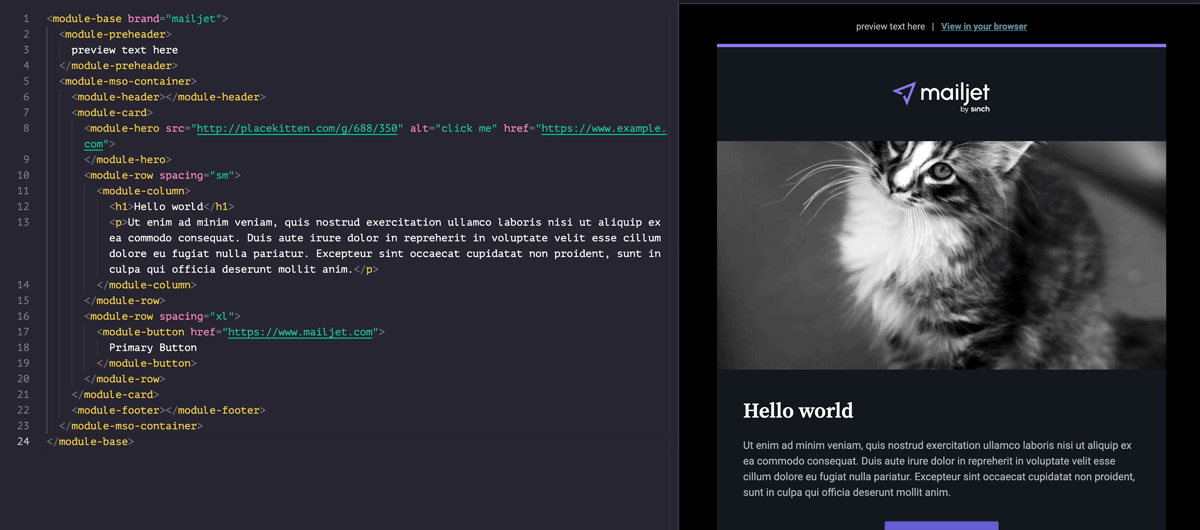Email Development
Drag-and-Drop Email Builders vs DIY Development: Pros and Cons

Email Development

When it comes to building emails, you’ve got options. There are plenty of drag-and-drop email builders that let you plop standard blocks into place. There are also custom-coded email designs that usually require a developer to build them.
Is one of these options better than the other? You’ve probably already guessed that the answer is going to be “It depends” (which coincidentally is the name of my semi-regular email newsletter). The reason there’s no definitive answer is that every company, brand, and marketing team has its own needs, goals, and resources.
If you’re debating which approach to email creation is right for your situation, we’ve got you covered. Let’s look at the pros and cons of drag-and-drop editors compared to do-it-yourself email coding.
One of the best things about drag-and-drop tools is how they’ve made creating digital projects a lot easier and more accessible to all sorts of people and businesses. Beyond email builders, that includes drag-and-drop website and application builders as well as graphic design tools.
These “low-code” or “no-code tools” are also commonly called WYSIWYG editors. Pronounced whizzy-wig, that acronym stands for “What You See Is What You Get.” Being able to see exactly what you’re building as you create is helpful for people who are unable to make heads or tails out of HTML, CSS, or various email frameworks and programming languages.
Many email service providers (ESPs), from Mailchimp and Mailjet to Constant Contact and AWeber, provide a drag-and-drop, email-building solution. Customer relationship management (CRM) software like HubSpot, Braze, Iterable, and Salesforce have them too. Some of these platforms also let you develop your own designs or tweak the code – but some don’t. So, be sure to do your research if you need both options.

Email designs built with a drag-and-drop editor usually look pretty good. They’re “foolproof” in a sense because they simplify the email-building process for non-coders (and often non-designers too).
In most cases, the user will choose a template or start with a blank slate. Then, they’ll upload graphics, change the color palette, add buttons and links, and adjust text formatting as needed.
Marketers who use WYSIWYG email editors appreciate the ease of use and the time it saves them – especially if they don’t have coding experience. Since drag-and-drop email builders are part of their ESP or CRM, it seems to make sense to use the tool to create campaigns and newsletters.
The biggest downside to using a drag-and-drop email editor is the limitations. It’s kind of like building a prefabricated home. You’ll have some design options, but if you have a dream home in mind, your vision may be impossible to build. That’s how it goes with drag-and-drop email design too.
There could also be times when your email design doesn’t look quite right. Maybe it’s the spacing between elements, the way the text wraps, or how the message looks on mobile devices. Two other concerns are dark mode email designs and accessibility features. Optimizing campaigns for those situations often requires an email developer – and those situations are more common than you may assume.
For all these drawbacks, if you’re not able to manually adjust the email code or don’t know how to edit it, you’re probably out of luck.
Because these tools are so popular, it’s also possible that your campaigns and newsletters will look and feel similar to other emails your subscribers open. That may not be a good thing if you’re trying to stand out in the inbox.
By the way, there’s absolutely no shame in using a drag-and-drop email builder. In most cases, they’ll get the job done in an acceptable way. But for branding and design perfectionists or marketing teams who want to take their email program to new heights, a bona fide email developer is what you need.
The biggest advantages of DIY email development are creative control and flexibility.
Let’s say the VP of Marketing comes up with an innovative idea for an interactive email campaign. It’s up to your team to bring it to life. But if you’re stuck with a drag-and-drop email builder, that request may be unrealistic, which means the boss is going to be bummed.
Don’t get me wrong. There are definitely limitations to what you can pull off in an email. However, when you’ve got access to someone who knows how to code HTML emails on their own, you can far surpass the possibilities of a WYSIWYG email editor. Plus, coding your own emails in an editor like Parcel or using a framework like MJML makes it easier to follow brand style guidelines.

Companies hire email developers because they are sending enough emails and getting enough from the channel to make having access to those niche coding skills well worth it.
Remember that prefab home analogy for drag-and-drop email builders? Having an in-house email developer, a talented freelancer, or an agency that specializes in email is like hiring an architect to design and build your dream home.
Email developers are in a class of their own. We’re problem solvers who like challenges, and we are proud of what we build. Check out the latest episodes of Notes from the Dev: Video Edition to see what I mean.
Here’s another analogy…
Asking an email developer to build a campaign in a drag-and-drop editor is like giving Picasso a box of crayons. Sure, good old Pablo could probably create something cool with those crayons. But if you want to make a masterpiece, it’s best if you let an artist use the medium and tools they prefer.
If you’re new to email coding, or if it’s your first time on our blog, this might be news to you… coding emails can be super challenging. Take it from someone who moved from the world of graphic design into email coding: Email development is not for the faint of heart. If you take a web developer and tell them to code an email – they’re in for a few surprises.
Unless you’ve got an efficient email production process, email development can also be time-consuming. If someone wants a complex campaign coded in a hurry, they may need to wait.
One of the biggest challenges of email development is getting campaigns to render consistently in different email clients. Whether it’s problems with responsive email design, dark mode emails, or getting GIFs to work in Outlook, you’ve got to pay attention, or you could end up delivering an email disaster to some subscribers.
Are you still trying to make a decision between coding HTML emails and using a drag-and-drop email builder? Here’s a comparison table to help you figure out which option is right for your email marketing needs.
Email development | WYSIWYG email editors | |
| Time | Depends on the developer’s skills, processes, and expertise. | Can be faster than email development, unless the software gives you problems. |
| Flexibility | Custom-coded campaigns are only constrained by the limits of email client support. | WYSIWYG email builders limit you to specific blocks, styles, and customization options. |
| Difficulty | Email development is tough. But there are resources and an active community to help you learn. | Most drag-and-drop email editors are intuitive and easy to use. The tools will be familiar to many marketers. |
| Control | DIY email development puts the power in the hands of the brand. If you have a big idea, a developer can try to code it. | Creative vision is limited to what is possible in the software. Big email campaign ideas may not be possible. |
| Cost | You’ll need to find and pay someone who can code emails. | Costs vary depending on the product and so do the features and limitations. |
| Branding | From colors to fonts, an email developer can code templates that reflect your style guide. | There are usually places to add your logo, but you may have to compromise on certain brand preferences. |
| Small business | Hiring a full-time email developer or outsourcing to an agency could be cost-prohibitive for smaller companies. | Drag and drop tools can be ideal for small businesses and one-person email marketing teams with limited time and budget. |
| Enterprise | High-volume senders with large marketing teams will want to develop their own email campaigns. | May be too basic for a big brand’s creative concepts and email campaign ideas. |
Maybe you feel like you need a little of both options. Perhaps there are times you’d like someone to jump into email coding and times you’d rather use a WYSIWYG email editor. That’s totally possible.
Plenty of ESPs and CRMs come with the option of using either a drag-and-drop email builder, built-in HTML editor, or uploading your own HTML. In fact, the Mailjet ESP lets email marketers choose from customizing a template, coding with HTML, or using MJML (aka the Mailjet Markup Language) to build responsive emails.

There is a way to get the control and flexibility of DIY email development along with the speed and ease of use that comes with many drag-and-drop email builders. Avi Goldman and I laid out this method during Email Camp in a presentation we called “The Future of Email Creation“.
It’s all about using components within an email design system. Components are reusable blocks of code that support specific use cases and can help you quickly switch between different styles for various brands.
While a component-driven email design system requires a lot of coding up front, it will save tons of time after the system is in place. Essentially, it gives you the ability to quickly build and update emails in a consistent way.

That’s much better than coding every email from scratch or cobbling together code snippets for every new campaign. Like a drag-and-drop email builder, you’ve got reusable blocks and repeatable email elements, but you define and customize those blocks. Plus, you can also change elements whenever and however you need to.
Whether you choose in-house email coding, hire an email design agency, find a freelancer, or use a drag-and-drop option, the challenge of inconsistent email client rendering follows you.
If you want to deliver an ideal email experience to every inbox, you’ve got to test and preview every campaign before you hit send. Email on Acid’s mission is to simplify the complexities of email marketing. That’s why every one of our customers enjoys unlimited email previews – no matter what pricing plan they choose.
Use our email quality assurance platform to test and optimize every message. When you find a problem, you can even fix it with our Email Editor, which lets you test code changes in real-time. Whatever you choose to use when building your emails, pre-send testing helps you deliver perfection. Don’t forget… even templates need to be tested.